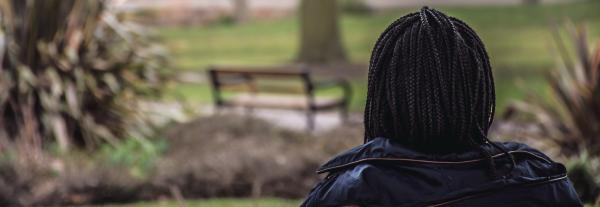
Case study
Tackling violent behaviour towards students of minority backgrounds
Mainstream secondary education
A young girl of African origin, aged 16.
Secondary school pupils (aged 15-16), girls and boys following mainstream secondary education. The class is made up mostly of the 'majority' ethnic group with some students from minority backgrounds (especially refugees).
During the lesson of physical education, immediately after a basketball game and whilst still on the court, members of one of the teams physically attack a girl from the opposing team after she performs very well and her performance leads to the winning of her team. She is a student of African descent. The girl is physically hurt and taken to hospital for a check up where she is diagnosed as being mildly concussed and has some deep scratches and bruises. Apart from the physical impact of the attack, this has a great psychological impact as she starts to demonstrate signs of anxiety and depression, her previously good grades in school start to worsen and she wants to stop going to that school.
Secondary school programme
Class teacher but also, where available, school counsellor, social worker, psychologists. In relation to one of the actions, the school administration should also be involved.
An inter-disciplinary, multi-level committee of teaching, support and administrative staff is established to examine this incident for purposes of outlining a prevention strategy to avoid replication and to set out the punishment for the perpetrators so that (i) this can ensure justice for the victim (ii) it can contribute to averting others from behaving in such a manner. It designs a prevention strategy to incorporate all students (victims, perpetrators and bystanders) that can include focus groups, discussions and cultural and educational activities.
The school environment in its entirety (both in terms of staff and students) is involved in tackling the particular incident in a just manner but also in the prevention of such events happening again. This will contribute to the sustainability of impact. If, for example, the incident was simply dealt with by the teacher of the particular class, the impact would be limited as it would deal just with that situation and not, for example, with the underlying reasons and with the involvement of more staff through an organised strategy.
After the sanction has been performed, the teacher (general or physical education) dedicates several discussion sessions on the matter. First, they hold a focus group during which they introduce key words, themes and questions related to the incident. This requires a sensitive approach, as both the victim and perpetrators are part of the focus group, but also the bystanders who may feel bad for not intervening. However, it is a very beneficial exercise as persons will have an open and safe space to discuss issues that have contributed to the escalation of events that led to the violent incident, and they will also have a chance to discuss their emotions. Following the focus group, the teacher can then hold cooperative group work sessions to further discuss the issues and place the students at the core of finding solutions to the issues discussed (e.g racist behaviour, stereotypes, misconceptions, etc.), and to allow them to embrace the general rule of non-violence.
Through working together, students will be able to communicate with each other and have the opportunity to understand others better, as well as overcoming stereotypes that lead to marginalization and, in the event of escalation, to violence. The directly affected and involved students (victim, perpetrators and bystanders) will benefit from an open discussion as it will allow them to freely express their emotions, concerns and facilitate perpetrators to overcome potential stereotypes, ideas, behaviours that led to the violent incident.
The teacher assigns the class with the task of collaborating together to organise a creative activity that works on fighting prejudice and stereotypes, such as organising a living library, or putting up a mini-show designed and coordinated by the students.
Creativity will bring the students to work together on themes identified during the discussion phase. The students can further pursue these themes and, through learning by doing, overcome stereotypes while the victims become empowered to take an active stand to protect their rights. The bystanders will also be affected by attitudes of solidarity for the victims of such incidences. This kind of activity needs to be incorportaed in order to further facilitate the learning process and embed the key values that are crucial for the incident not to be repeated.
For the discussion phase it is imperative to have a safe and open environment, particularly for the victim who is probably traumatised by the incident but also for the perpetrators to be able to express their emotions and ideas freely and, subsequently, overcome them.
The discussion phase should take place before the creativity phase so as to allow for a good flow (i.e determining key themes, ideas and problems first, overcoming them through discussion and then working together creatively to tackle them further).
To run the focus group, the teacher can use the following questions/keywords: why do you think this happened? To the victim - how did it make you feel? To the others - how would you feel if you were in their position? What do we need to do to fix this situation? What kind of support can I (the teacher) give you?
For the cooperative work sessions, teachers are prompted to use methods such as wall writing, role playing, role reversal, etc., to facilitate communication on this particularly difficult issue. It is advised to have three learners taking notes of what is being discussed and, at the end of the process, along with the teacher and the other participants, create a mini-report of findings in terms of reasons and solutions.
